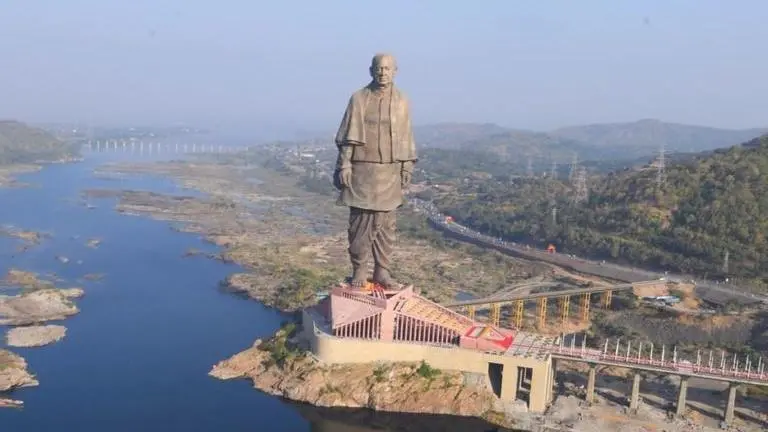Updated 31 October 2018 at 11:53 IST
Statue of Unity: Here's how the tallest statue in the world was built
The foundation of the Statue was laid by Prime Minister Narendra Modi in 2010, when he was the Chief Minister of Gujarat and the project was completed on October 9, 2018. The article comprises of everything that happened in between
- India News
- 0 min read

India’s ode to Sardar Vallabhbhai Patel, the Statue of Unity, has taken its place atop the list of the world's tallest statues, following Prime Minister Narendra Modi unveiling his brainchild on October 31 while commemorating the 143rd birth anniversary of the 'Iron Man of India.
The architectural marvel that honors India’s first Deputy Prime Minister stands 182-meters-tall (240m tall including the base of the structure), and was, remarkably, erected in just 33 months. Let’s take a look at its growth:
The statue was conceived and envisioned by Prime Minister Narendra Modi in 2010 when he was still the Chief Minister of Gujarat, and the project commenced in October 2013 following his laying of the foundation stone, when engineering and construction major Larsen & Toubro took over construction. It further took 33 months, 3,000 workers, 180,000 cubic meters of concrete, 18,500 tonnes of reinforced steel, 6,500 tonnes of structured steel, 1,850 tonnes of bronze cladding -- an expenditure of Rupees 2,989 crore for the construction of the world's tallest statue.
Advertisement
Timeline
2010- Project was announced by then CM of Gujarat Narendra Modi
Advertisement
October 2013- Project was taken over by L&T, the foundation stone was laid.
April 2015- Engineers began grasping recent technologies and quality standards that would be required for the unprecedented feat of erecting the colossal statue
July 2015- Board of historians and museum masters was set up; workshops were conducted
January-February 2016- The project was equipped for the monsoon, allowing construction to proceed unimpeded during the rains
October 9, 2018- Project was completed
October 21, 2018- Narendra Modi, now Prime Minister, inaugurates the statue
In April 2015, engineers had started educating themselves with the updated technologies and quality standards required for the unprecedented undertaking. That was followed by geotechnical and hydrological surveys that were conducted on site. The required study of the shadows and light was done, confirming the orientation of the statue.
On July 2015, a board of museum experts and historians was set-up, while public consultations and workshops were held.
Since September 2015, the cranes had been on the project site, lifting rebar, steel, and concrete. At the same time, bronze fixtures to build the outer cladding were accumulated. This hefty and typical cladding holds symbolism, considering that Sardar Patel was known as the ‘Ironman of India’.
To build the statue, four Potain tower cranes were used. Contractor Larsen & Toubro (L&T) required cranes with the capacity and reach to meet the specifications of the project and also the compactness to work in the limited space. L&T nominated three of Potain’s MR 295 H20 units, a mid-size luffing jib crane with a compact counter jib that had the needed free-standing height, as well as the right capacity and working scope. It also chose an MC 205B top-slewing crane to work alongside the MR 295 H20 models, supporting material handling duties, as per media reports.
In January-February 2016, provisions were made to tackle monsoon to avoid any disruption amid the construction.
By July 2017 the statue was completed up to 60 meters and by July 2018 the core was completed up to 157 meters. Finally, on October 9, 2018, the Statute of Unity was erected, ready to be inaugurated on October 31, 2018
Published By : Digital Desk
Published On: 31 October 2018 at 11:39 IST




